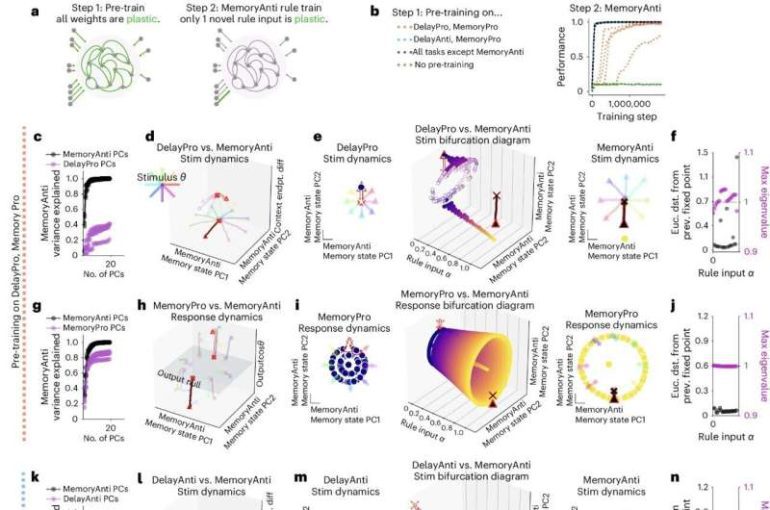- Cognitive flexibility is crucial for multitasking and adaptability.
- AI struggles to match human flexibility, particularly in learning and switching tasks.
- Recent research identified “dynamical motifs” in neural networks that enable modular computation.
- These motifs are crucial to task performance and rapid transfer learning.
- Findings could lead to AI systems that better emulate human cognitive flexibility.
Main AI News:
Cognitive flexibility—the ability to rapidly switch thoughts and concepts—is a critical human strength, supporting multitasking, quick skill acquisition, and adaptability. Despite advances, artificial intelligence (AI) still falls short of matching human flexibility, particularly in learning new tasks.
Recent research has focused on bridging this gap by examining how biological neural circuits enable multitasking. Traditionally, AI networks are trained for specific tasks, limiting their adaptability. In 2019, a team from NYU, Columbia, and Stanford trained a single neural network to perform 20 related tasks. Building on this, a Stanford team recently published findings in Nature Neuroscience that explore how this network manages multiple tasks through modular computations.
“Flexible computation is a hallmark of intelligent behavior,” note researchers Laura N. Driscoll, Krishna Shenoy, and David Sussillo. Their study identifies a neural foundation for modular computation in multitasking artificial recurrent neural networks and introduces the concept of “dynamical motifs.”
These motifs, recurring patterns of neural activity, mirror the modular structure of tasks and are crucial for computation, such as decision-making and memory retention. In convolutional neural networks, these motifs are formed by clusters of units with restricted activation functions, and their disruption impairs task performance.
The research also highlights how these motifs adapt for rapid transfer learning, positioning them as fundamental to computational processes in neural networks. This discovery deepens our understanding of neural flexibility and could drive the development of AI systems that better mimic human cognitive agility, revolutionizing their application in complex scenarios.
Conclusion:
Identifying dynamical motifs as a fundamental element in neural networks represents a significant advancement in AI research. For the market, this means potential leaps in developing AI systems that can adapt more rapidly and efficiently to new tasks, mirroring human cognitive flexibility. Such advancements could revolutionize industries reliant on AI by enabling more versatile and resilient applications, enhancing productivity, innovation, and competitive advantage. Companies that leverage these insights could position themselves at the forefront of the AI evolution, driving substantial market growth.

